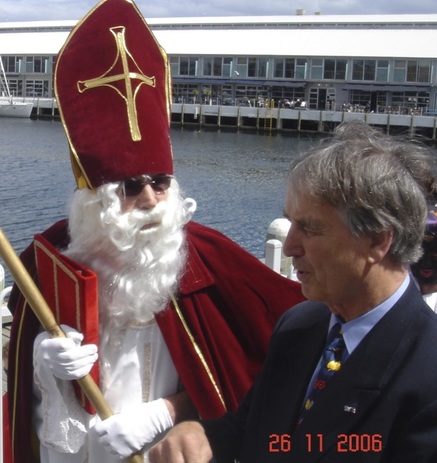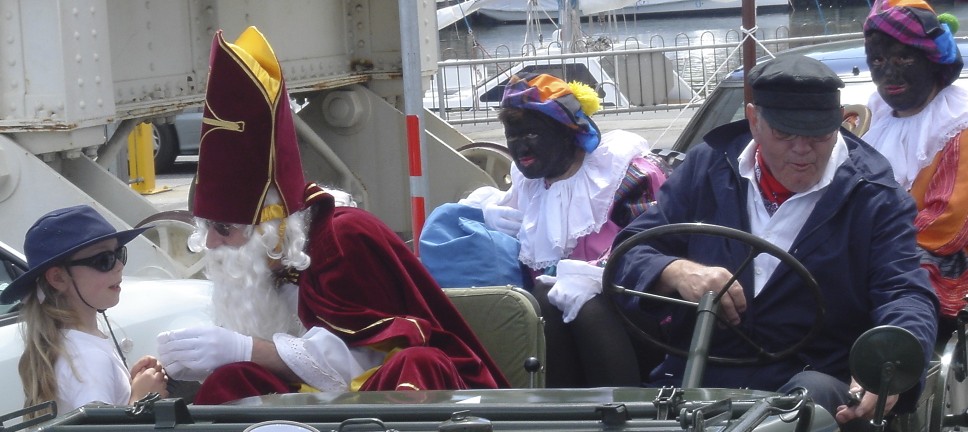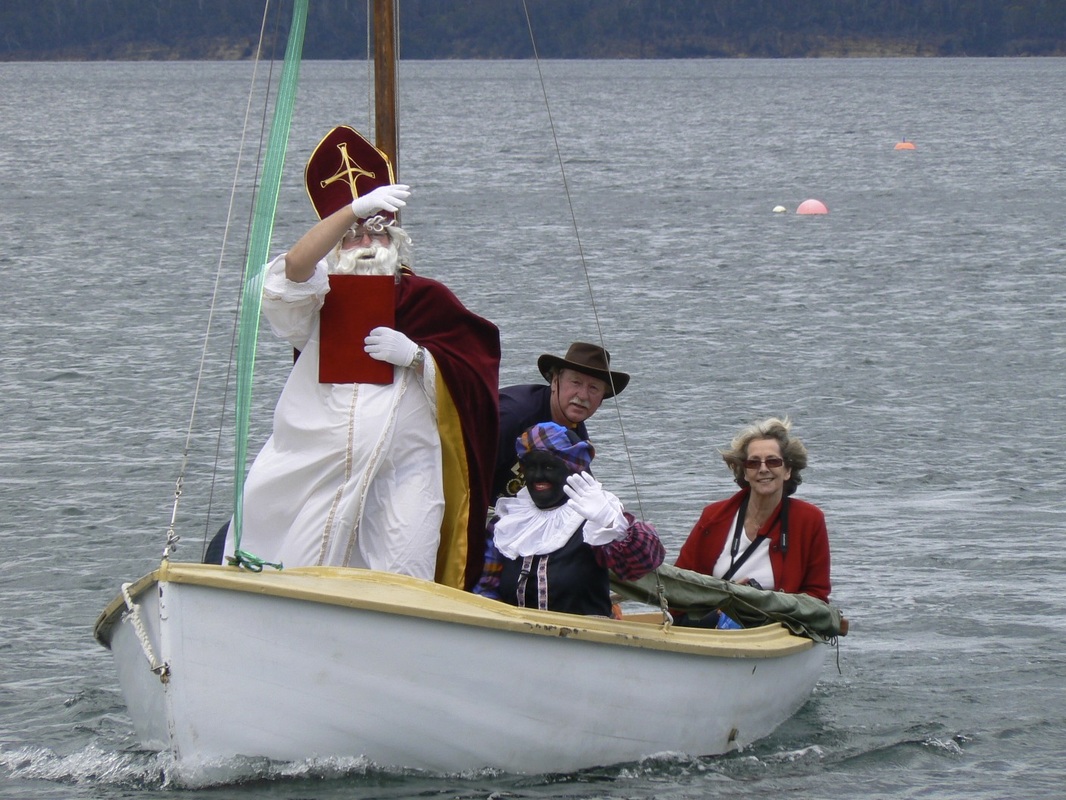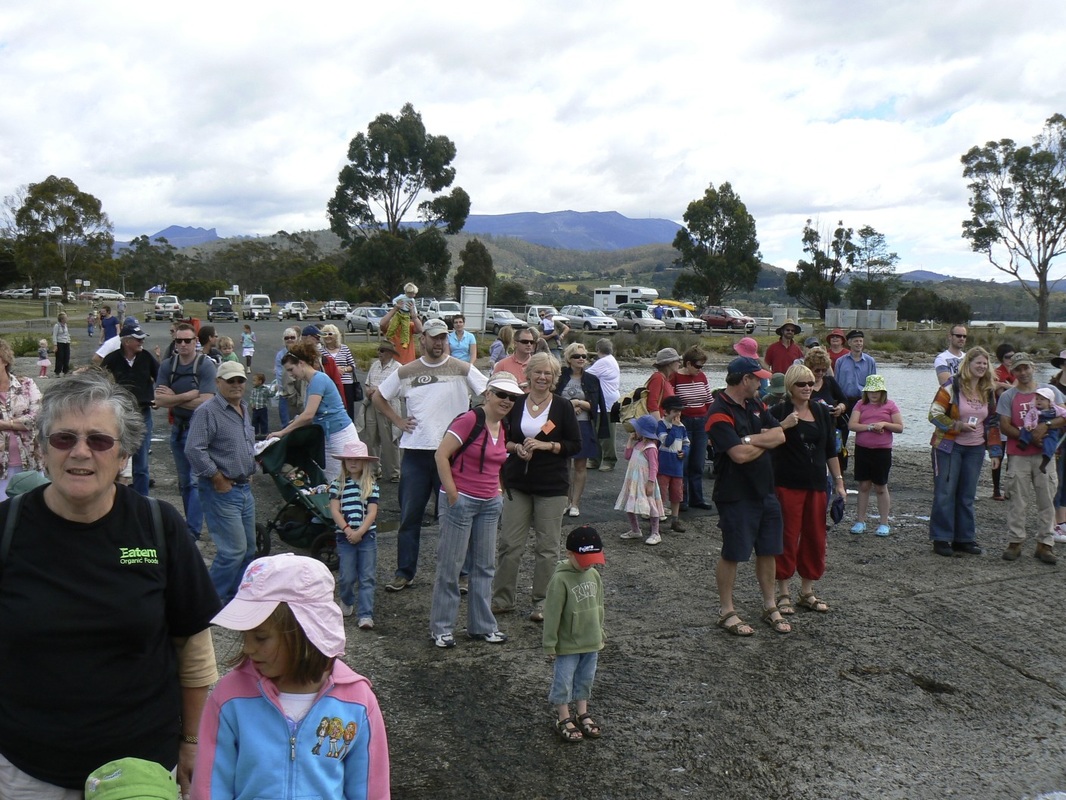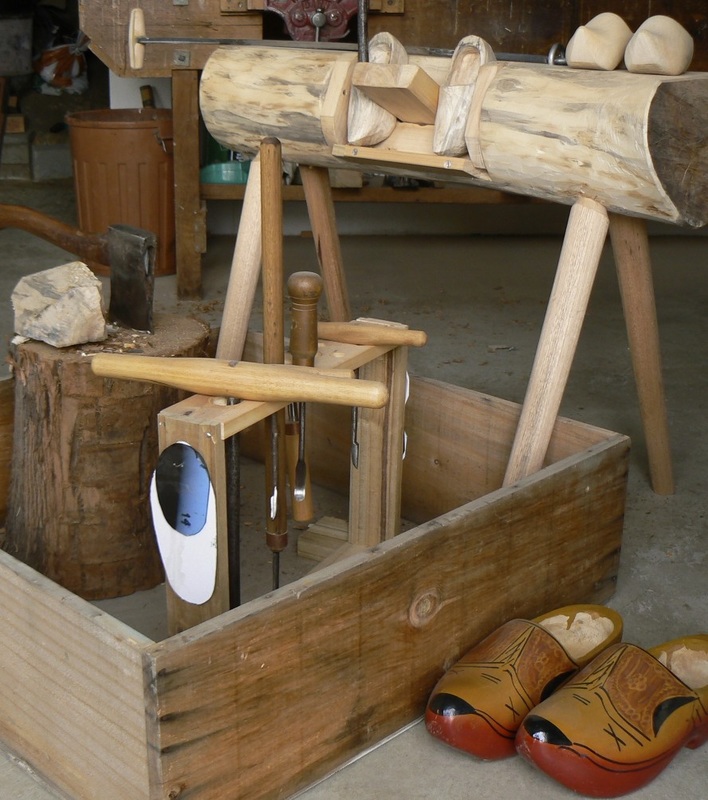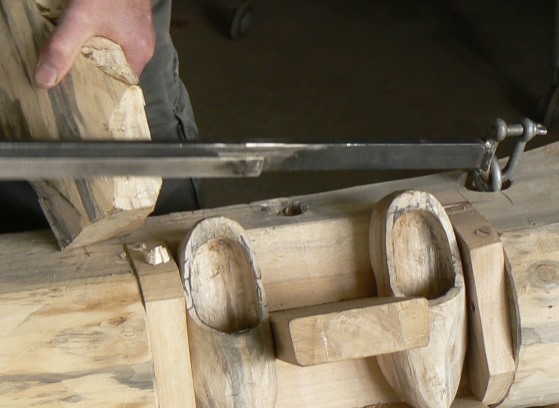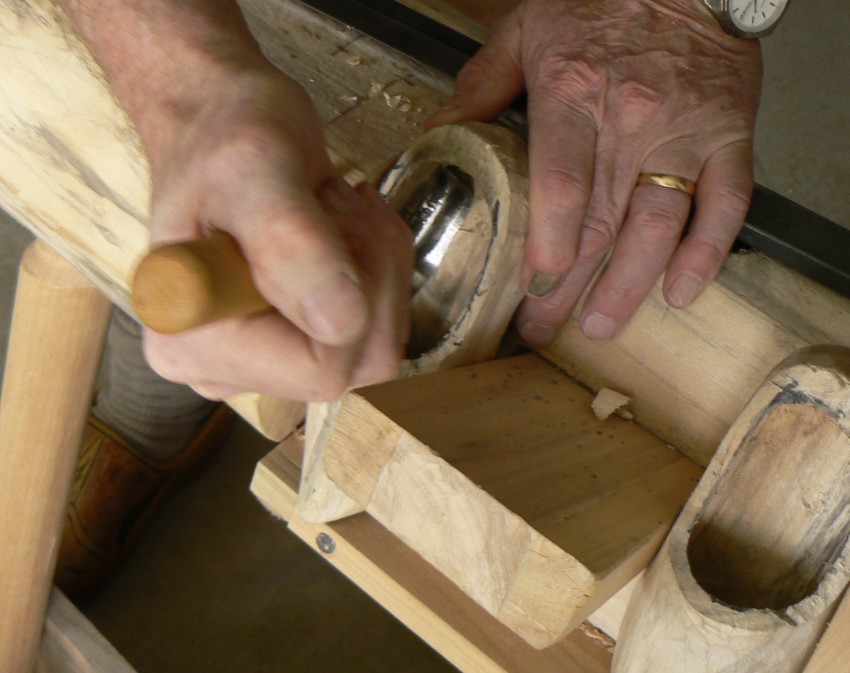CELEBRATIONS
The van der Laans celebrated their wedding anniversary in November 1954. There had been other celebrations - the wedding of Wim Sikkema was the first - a small gathering of six men, including the groom but no bride in August 1950. The wedding of Rieks and Janny Wierenga in February 1952 could be seen as a pre-cursor to this event. All events included the whole Dutch migrant community, at least all the Reformed Church members, but also some others.
The program produced for the van der Laan celebration is available on the right. |
| ||||||
Saint Nicholas - Sinterklaas
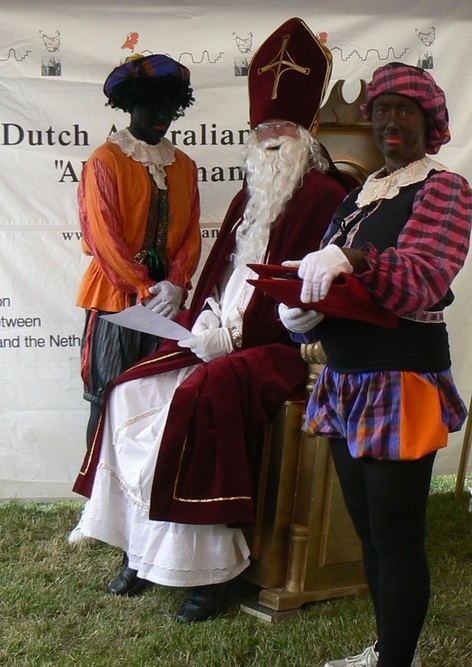
Sinterklaas with his helpers, the Zwarte Pieten Roy and Monica, ready with the list of names of all the good children.
CLOGS
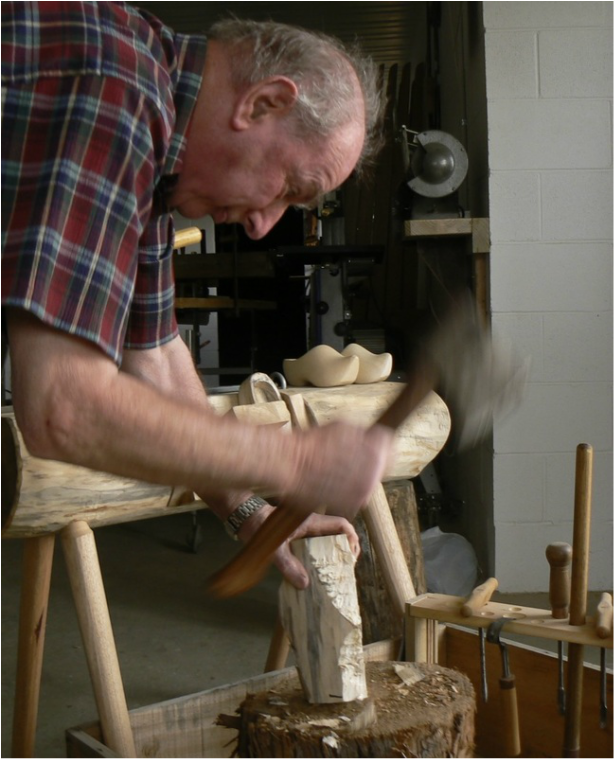 Klaas Lanting demonstrates the art of clog making - here preparing a wooden block.
Klaas Lanting demonstrates the art of clog making - here preparing a wooden block.
Clogs and Dutch are ideas that belong together, largely due to the success of marketing by the Dutch Tourism industry. A more or less unique product and a more or less unique people - a marketers dream combination.
Reality is quite different. Very few Dutch migrants brought clogs with them, because very few of them wore clogs. In the early 1970s, some clogs were imported to Tasmania by John Hollander, of Hollander Imports. One very large wooden box full. Most were sold as souvenirs, to put pot plants in, to be a decoration.
Clogs are very useful, and can be comfortable if correctly fitted. The timber insulates the feet from very cold workplace floors. Clogs also work the same as neoprene wetsuits - a thin layer of water inside rapidly heats to body temperature and insulates, thus in wet ground where they may fill with water.
Kingston resident Klaas Lanting began his working life as an apprentice clog maker, and still has the knack.

